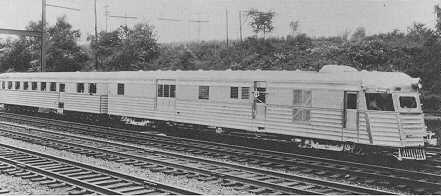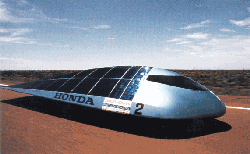Now, getting down to serious business, here is a drawing of a celebrated train that was in service in New York (Albany to Syracuse) in 1893. "The train was made up of four cars, weighed 361,000 lbs. (including passengers and supplies), and had a carrying capacity of 218 passengers. Including the engine and tender, the train was 337 ft. long, and weighed 565,000 lbs." [Clement E. Stretton, The Development of the Locomotive, A Popular History 1803-1896] This comes to 2,592 lbs. per passenger! Assuming a typical passenger weighed about 150 lbs, the weight of the train itself was about 2,440 per passenger. This is not surprising when one considers the quality of steel that was possible at that time.

"The first use of stainless steel in mass transit equipment was
the Budd-Micheline light-weight car built in 1932. Instead of weighing
130,000 to 240,000 pounds, which was typical for cars in those days, the
all-stainless Budd car tipped the scales at 13,500 pounds. Because
of its light-weight design, the car did not need 300 to 900 housepower
motors; 90 horsepower did very nicely."
[Stainless Steel for Mass Transportation, Committee of Stainless
Steel Producers, American Iron and Steel Institute, Washington, DC, 1977,
pg. 3]
We don't have data concerning how many passengers these vehicles held, but obviously this improvement in materials led to a dramatic improvement on the 2,500 lbs. per passenger that was possible at the turn of the century.


In our preliminary investigations, we have determined that the main composite structure might weigh about 1,500 pounds, or about 75 pounds/passenger. We're on our way!